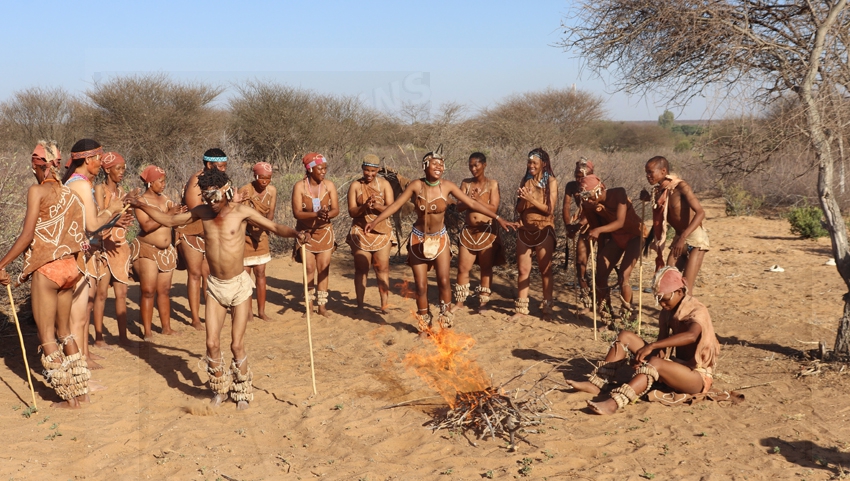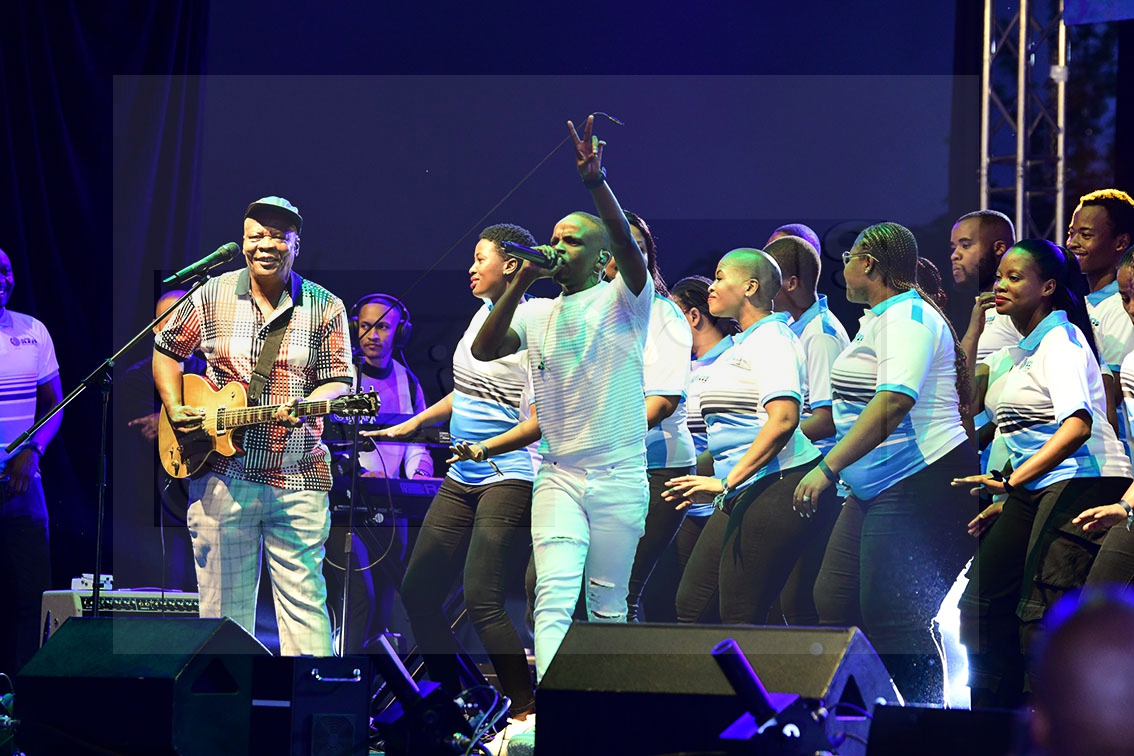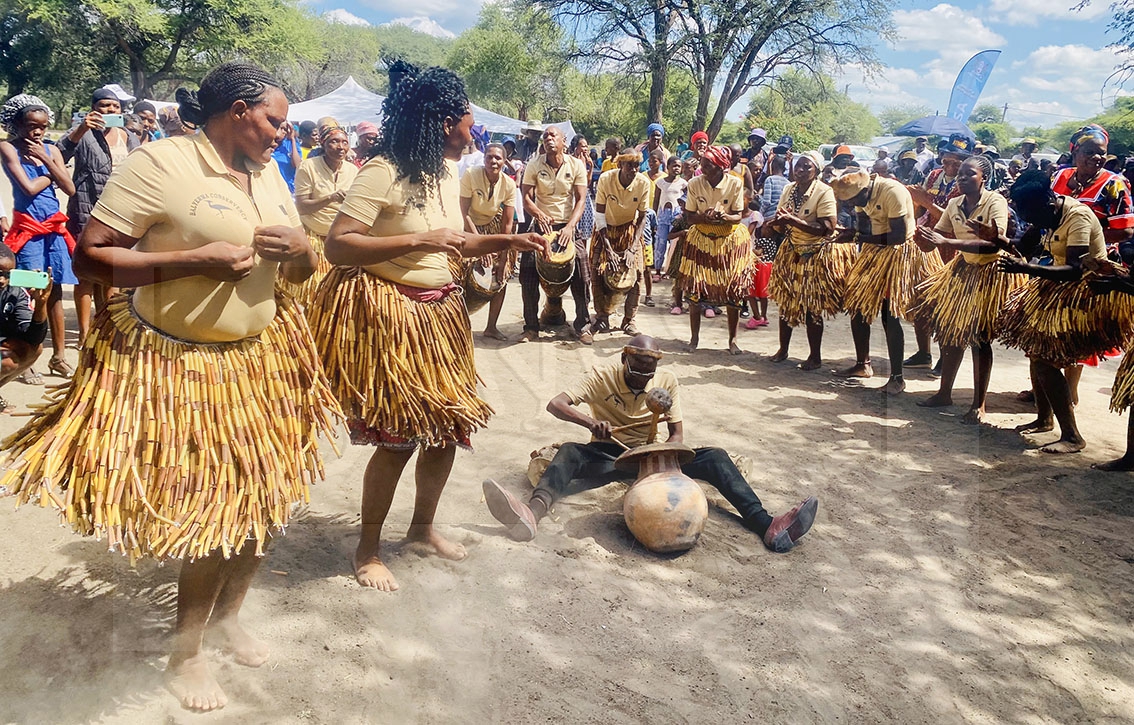Basarwa preserve heritage through dance
11 Nov 2024
Uwe! ahee Uwee! aah yeee Uwee! At break of dawn Basarwa chant deeply rich, spiritual sonorous melodies warily moving around flickering red, yellow and orange flames amidst a stunning glow of embers.
Imposing and impressive in effect and style, adorned in earthy coloured animal skins and hides, their bare feet move up and down as they perform their ritualistic traditional dance, which leads them into a trance to heal a member of their clan.
This classic Xii dance is performed by Ncancase group of indigenous San descent comprising of the young and the old at New Xanagas, led by Segametsi Xhanxahre.
According to her, the group is deeply rooted in the Basarwa cultural heritage, which was passed on to them orally by their forefathers.
They perform societal rituals through song and dance, where each performance is tailor made for a specific activity such as the hunting and gathering dance performed to mark the preparation for the coming expedition or celebrating a successful hunt.
The dance is also performed to mark a young man’s successful first kill, who will then be secluded and later initiated by making incisions on his arms and rubbing eland fat onto the cuts.
“During hunting, there could be challenges such as accidents. The song and dance is used to arouse ancestral protection on hunting so that the one who has been affected is healed,” she said.
She said Basarwa perform the Ngwale dance, which is of a sensitive nature as they sometimes perform it nude to initiate a girl into adulthood, which takes place when the girl reaches puberty.
It starts with isolation of the girl in a hut, secluding her from the rest of the community. The isolation is meant to have the elders give her instructions about her new status.
She learns from old women about her role in the community, and specifically about her relationship with men.
“Ka nako e mosetsanyana o rutwa boitsholo jo bontle le kapari, gore lelwapa le tshwarwa jang mme re mo ruta se ka go bina pina ya Ngwale,” she said.
The Ncancase San group primary responsibility is to introduce young ones to song and dance and this is where the ones who are found to possess healing powers are then transferred to the bigger group called Kaiqhoshe San group, which comprises seasoned traditional healers in the village who are able to heal and perform miracles in reality.
According to her, this is the spiritual substratum of the village who are highly revered and are consulted to bring healing.
They are purely traditional, require no monetary compensation and rarely enter national arts competitions in line with maintaining their purity and only participate during big cultural festivals such as the Kuru festival, where pure demonstration of ancestral spiritual power comes to life.
“This dance is spiritual, it evokes certain spirits, where the seasoned ones are able to walk bare footed on fire, put their head in hot coals without being burnt,” she said.
Irene Kreisjan, leader of Kaiqhoshe San group is said to be one of the four remaining pure Basarwa ‘Shamans’ who is able to perform such a ritual dance.
In an interview, she said it was passed on from generation to generation.
“Our forefathers were traditional doctors who could heal and wake a person up from a sick bed. As hunters and gathers, they stayed in the bush. This is not an easy undertaking,” she said.
To avoid their traditional way of healing going extinct, they pass it on to the next generations,
“When we see a child dancing and we notice in spirit that they are traditional doctors, we select them from the rest and make them realise their gift. We then initiate them around the fire at night,” she said.
“When I enter the trance stage the world around me changes, it becomes green, the fire looks like it is burning from above, and this is the time to initiate the chosen ones.
“This is the highest spiritual realm. During the dance at night, around the fire, we are able to walk on fire without burning, dinao tse e abo e se tsa rona, re a bo re rwele dinao tsa semoya, metsi a nna mantsi mo mmeleng.
When we dance we are not alone. We are with our ancestors whom we summon through song and dance, we get powers from them. That is why we perform extraordinary things,” she said.
She said they were able to see them, they look real, their eyes light up, they appear real in the physical yet are not real.
“When you get closer and you go past them, they disappear. You will just feel cold hands embracing you,” she said, describing their confrontation with the ancestors.
Kreisjan said when one was chosen by the ancestors to become a traditional healer and they refused to accede to the call, they could fall physically, or mentally ill to the point of being disabled. ENDS
Source : BOPA
Author : Calviniah Kgautlhe
Location : NEW XANAGAS
Event : INTERVIEW
Date : 11 Nov 2024







